Posts Tagged ‘2014’
Royal Mail honours eight former British prime ministers on new stamps
On 14th October Royal Mail issued the first ever set of special stamps to honour eight former British Prime Ministers of the past 200 years.
Together they create an intriguing snapshot of Britain’s political history over the last 250 years.
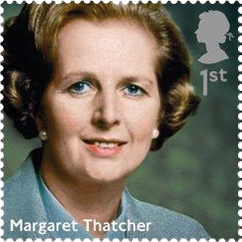 Margaret Thatcher, Baroness Thatcher of Kesteven, 1st Class Stamp:
Margaret Thatcher, Baroness Thatcher of Kesteven, 1st Class Stamp:
Nicknamed the ‘Iron Lady’, Thatcher was Britain’s first female Prime Minister. She was elected MP for Finchley in 1959 and entered Downing Street in 1979. As Prime Minister she won three elections and implemented policies that became known as Thatcherism.
Harold Wilson, Lord Wilson of Rievaulx, 1st Class Stamp: 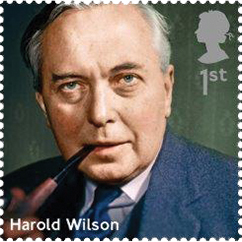
He first became Prime Minister 50 years ago and went on to win three further general elections, making him the only Prime Minister in the modern era to have won four general elections. As Prime Minister he implemented social reforms in many areas including education, health, housing and child poverty.
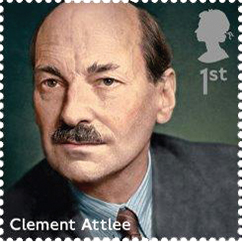 Clement Attlee, 1st Earl Attlee, 1st Class Stamp:
Clement Attlee, 1st Earl Attlee, 1st Class Stamp:
As the winner of the 1945 landslide election Attlee was the first head of a majority Labour government. Under his leadership Labour launched the National Health Service, extended unemployment insurance, and nationalised the railways.
Sir Winston Churchill, 1st Class Stamp: 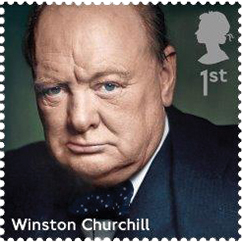
Churchill famously led Britain to victory during the Second World War. He served as Conservative Prime Minister twice – from 1940-1945 and 1951-1955. He was known for his rousing speeches and quotations, including the iconic ‘We Shall Fight on the Beaches’ in 1940. Churchill was awarded the Nobel Prize in Literature in 1953.
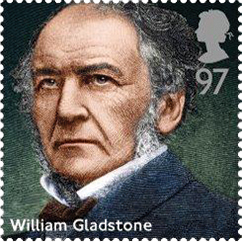 William Ewart Gladstone, 97p Stamp:
William Ewart Gladstone, 97p Stamp:
Dubbed the ‘Grand Old Man’ of Victorian politics, Gladstone was Prime Minister for four separate periods – more than any other Prime Minister. During this time he reformed the army and civil service, extended voting rights and introduced the first national system of primary education.
Sir Robert Peel, 2nd Baronet, 97p Stamp: 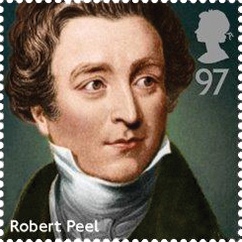
During his time as Prime Minister Peel founded the Metropolitan Police Force and put through legislation allowing Catholics to become MPs. Other landmark legislation included the Mines Act of 1842 that banned the employment of women and children underground, and The Factory Act of 1844 that limited working hours for children and women in factories.
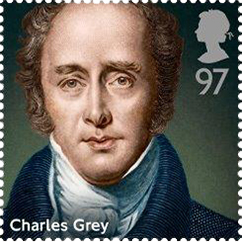 Charles Grey, 2nd Earl Grey, 97p Stamp:
Charles Grey, 2nd Earl Grey, 97p Stamp:
Grey led the Whigs for almost 30 years, and was Prime Minister for just 4. During this time he passed the the ‘Great’ Reform Act of 1832 to reform the electoral system and abolished slavery throughout the British Empire with the Slavery Abolition Act of 1833.
William Pitt the Younger, 97p Stamp: 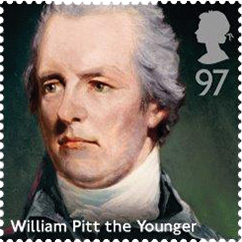
William Pitt was an MP at 21, Chancellor at 23 and Prime Minister at 24 – making him Britain’s youngest ever Prime Minister. During his time as Prime Minister he led Britain into the Napoleonic Wars, reformed the government of India, and passed the Act of Union between Great Britain and Ireland.
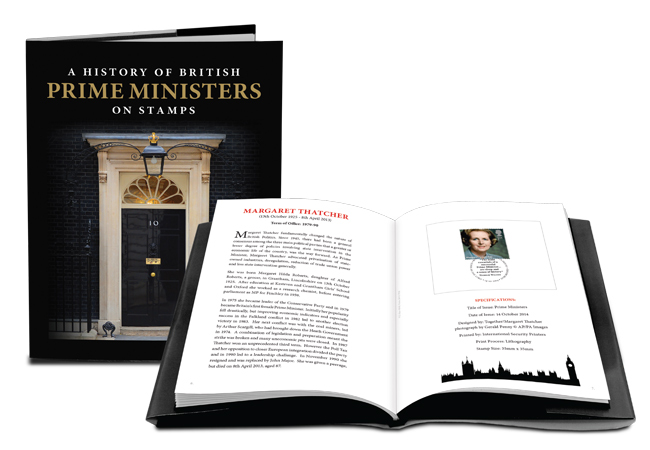 You can secure the complete set of 8 Royal Mail stamps today in a limited edition philatelic book available exclusively from The Westminster Collection.
You can secure the complete set of 8 Royal Mail stamps today in a limited edition philatelic book available exclusively from The Westminster Collection.
Alongside each stamp you’ll find informative narrative about each Prime Minister. Each stamp is postmarked 14th October 2014 – the first day of issue.
Royal Mail will issue many thousands of stamps but only 495 sets have been earmarked for this unique presentation book.
The Making of a British Icon
How an Italian engraver produced the most British coin of all time
Across the world, one coin is seen to epitomise all that it is British in a way that compares with nothing else. That coin is the Gold Sovereign. And at the centre of its international reputation is a quintessentially British design – St. George slaying the dragon.
Yet it is not, as you may first think, the work of a classical British artist, but instead that of the second son of an Italian federal court judge, who only came to England just two years before his portrayal of St. George and the Dragon first adorned a British coin in 1817.
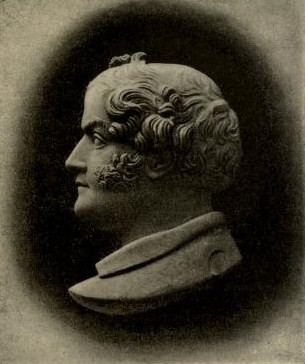
Cameo of Benedetto Pistrucci, by his daughter c. 1850
In fact well before his arrival in England in 1815, Pistrucci was already well established as a leading gem engraver and producer of fine cameos amongst European high society. He rapidly made an impression on his arrival in London, winning the approval of the well-known antiquarian William Richard Hamilton.
Despite having no coin or medal experience, he was quickly commissioned by the Master of the Mint Wellesley Pole, brother of the Duke of Wellington, to produce a new portrait of George III as part of the Great Recoinage. His model, created in the unusual medium of red jasper, was re-engraved by Thomas Wyon for its final use on coinage losing, in Pistrucci’s eyes at least, much of the detail.
However, his work was clearly of sufficient quality to impress Pole, who followed up with a commission for the design that has forever since been the synonymous with the name Benedetto Pistrucci – St. George and the Dragon.
A design nearly lost the annals of history
Yet within just eight years it looked like Pistrucci’s design might disappear forever, as the Royal Mint changed the Sovereign reverse design to an heraldic shield, which was to remain in place for the next 46 years.
It was only a drive to improve the design quality of the coinage, led by new Deputy Master, Charles Fremantle that saw the re-introduction of St. George in 1871. However, both reverse designs were struck concurrently until 1887 when the Chancellor of the Exchequer declared that “by tradition and recommended by the great beauty of the design” Pistrucci’s design should once again appear on all Gold Sovereigns.
“The chief coin of the world”
By the mid-1850s the “new” Gold Sovereign had become a coin of true international status. Indeed an official list identifies no fewer than thirty-six colonies and dependencies in which the gold sovereign or half sovereign was recognised as legal tender.
More surprisingly, so great had become the reputation of the British sovereign that it was also in regular use in other countries outside the Empire, including Brazil, Egypt and Portugal.
However, it was the opening of the Sydney branch of the Royal Mint in 1855 following the discovery of gold in Australia that really marked the international growth of the Sovereign. Initially authorised to strike Sovereign’s to a different design, in 1871 Sydney finally started to strike coins of the same designs as the UK (just in time for the Pistrucci revival), only identified by a small “S” mintmark.
Further Australian Royal Mint branches followed in Melbourne in 1871 and Perth in 1899, before the Mint’s reach extended to other Empire countries with branches opening in Ottowa (1899), Bombay (1918) and Pretoria (1923) – all producing Gold Sovereigns.
It is no wonder that the eminent economist of the early 20th Century, Sir John Clapham, proclaimed the Gold sovereign as “the chief coin of the world”.
A worldwide modern icon – good enough for 007
The last international sovereign was struck in Pretoria in 1932. By then the international interest in Gold Sovereign, which started in Victorian times was well and truly established. And it is a reputation that continues right up to today.
Ian Fleming chose to equip James Bond with 50 Gold Sovereigns in his attaché case in the From Russia with Love, whilst Special Forces are still believed to carry Gold Sovereigns, as an emergency international currency.
In 2012 the Royal Mint once again authorised the striking of the St. George and the Dragon Gold Sovereign outside the UK under licence in India, so great is its popularity amongst the people there.
Reference
“The Royal Sovereign 1489 – 1989”, Ed GP Dyer
“A New History of the Royal Mint”, Christopher Edgar Challis
The Royal Mint Museum Website
________________________________________________________________
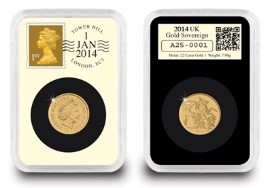
The 2014 Gold Sovereign is available in a limited edition DateStamp™ Presentation of just 995 pieces –now sold out.

